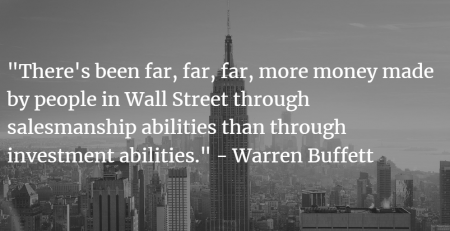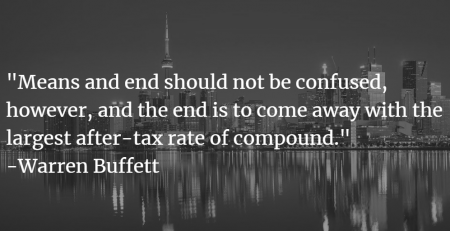GCI: Growth or Value Investors?
A common question we receive is: “Are you at GCI growth investors or value investors?”
Prospective clients might look at our portfolio and see holdings such as Microsoft and Mastercard, which have historically traded at price-to-earnings multiples in excess of 35x, alongside holdings such as First American Financial and UPS, which have historically traded at price-to-earnings multiples below 15x. Naturally, they might ask what is going on here.
We believe that the question and confusion stems from the fact that Wall Street, along with the broader financial media, have come to market the terms “value” and “growth” as opposing ideas. To them, “Value” investing refers to low multiple, often inferior businesses, and “Growth” investing refers to high multiple, often higher-quality businesses. To them, these are mutually exclusive characteristics – a company can be ‘a value stock’, or a company can be ‘a growth stock’, but never both. Over the years, this entirely arbitrary and logically flawed segregation has grown in popularity – so much so, that billions of dollars are now invested based solely upon the idea.
But if we approach this question logically, the fundamental concept of separating “growth” from “value” makes no sense: value represents what you are getting for your money and growth is simply one part of that equation.
When we approach investing, we endeavor to ascertain what we think a business is actually worth. If we can buy that business in the market for less than what we think it is worth, then that is probably a good starting point for investing. But to understand what the value of any given business is, we must first consider growth as one of the many variables that go into that business’s valuation. Sometimes growth will be a major part of a business’s valuation, sometimes it will be negligible, and sometimes it can even be negative (if a company is investing shareholder capital in negative return areas).
Common yardsticks of “value” such as price-to-earnings (P/E) ratios, dividend yields, book values, etc. tell us little about the real intrinsic value of a business (a company can have a high P/E and be cheap relative to its real intrinsic value as we have discussed in prior articles). Similarly, a business growing its revenue quickly tells us little about its ultimate prospects as an investment. After all, a fast-growing company could still be destroying shareholder capital – what good is growing a loss-making business? Instead, what we need to focus on are the long-term, moat-protected future free cash flows that we stand to receive as investors in a business – this, and only this, is where the real value of a business lies.
For example, Microsoft may have a high P/E ratio, but Microsoft is also a mission-critical company that is growing faster than many smaller companies and doing so with tremendous operating leverage. While Microsoft may look expensive relative to their own past on basic metrics, their growth rate and future market opportunity far outpace their history. The company should be able to deliver at least mid-to-high teens cash earnings growth, with further upside from deploying their significant cash balance. As such, we think Microsoft represents good value at today’s prices even though Wall Street would call it a “growth” stock.
On the other hand, UPS may have a low P/E ratio and therefore be classed as a “value” stock, but UPS is also a structurally advantaged business, with overstated and misunderstood competitive threats, that is currently in the process of a multi-year investment program which will increase efficiencies, and thus grow cash earnings at levels well in excess of what the market is giving them credit for. Add to that their 20% returns on investment and their significant long-term market runway accelerated by the shift to e-commerce, and our returns here will likely be on par, or even in excess, of many of the “growth” stocks beloved by Wall Street.
In closing, what this all means in practice is that there is no real distinction between “value” and “growth” since both are fundamentally interlinked and interdependent. In a more rational world, everyone would be aiming to be “value” investors – in the sense that value investing just means purchasing a business at a price below its real intrinsic value. This is what investing is all about and growth is just one factor that goes into that.
Disclosures: This website is for informational purposes only and does not constitute an offer to provide advisory or other services by Globescan in any jurisdiction in which such offer would be unlawful under the securities laws of such jurisdiction. The information contained on this website should not be construed as financial or investment advice on any subject matter and statements contained herein are the opinions of Globescan and are not to be construed as guarantees, warranties or predictions of future events, portfolio allocations, portfolio results, investment returns, or other outcomes. Viewers of this website should not assume that all recommendations will be profitable, or that future investment and/or portfolio performance will be profitable or favorable. Globescan expressly disclaims all liability in respect to actions taken based on any or all of the information on this website.
There are links to third-party websites on the internet contained in this website. We provide these links because we believe these websites contain information that might be useful, interesting and or helpful to your professional activities. Globescan has no affiliation or agreement with any linked website. The fact that we provide links to these websites does not mean that we endorse the owner or operator of the respective website or any products or services offered through these sites. We cannot and do not review or endorse or approve the information in these websites, nor does Globescan warrant that a linked site will be free of computer viruses or other harmful code that can impact your computer or other web-access device. The linked sites are not under the control of Globescan, and we are not responsible for the contents of any linked site or any link contained in a linked site. By using this web site to search for or link to another site, you agree and understand that such use is at your own risk.






